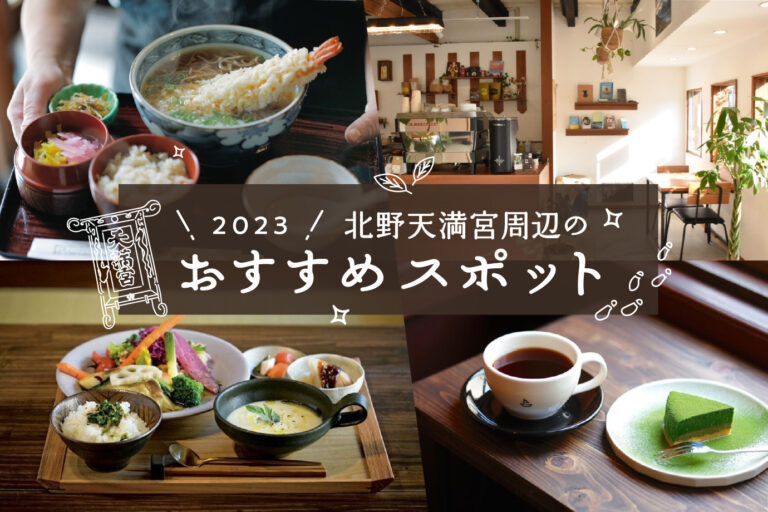
[2023]Recommended spots around Kitano Tenmangu Shrine in Kyoto...


Kitano Tenmangu Shrine is dedicated to Sugawara Michizane (Lord Suga), who is famous as the god of learning. Here we introduce the hidden story of "Tenjin-san," as well as highlights of the shrine, such as its abundant nature, including plum blossoms and autumn leaves, which Lord Suga also loved.
As the head shrine of the 12,000 Tenmangu and Tenjin shrines nationwide, the shrine has been prayed to for various wishes, including success in entrance examinations and academic achievement. The site where Kitano Tenmangu Shrine stands today has been considered a sacred place for purification and purification since ancient times, and has a history of being built to repose the spirit of Lord Suga, who tragically died in the Heian period (794-1185). In memory of Lord Suga, events such as the Tenjin Market held on the 25th of every month, the regular festival, and the Izuki Festival are still held today.
Tenmangu shrines throughout Japan revere "oxen" as the messengers of Tenjin-sama (Lord Suga). It is said that Suga was born on the day of the Ox in the year of the Ox, and lived a life closely associated with the Ox. Legend has it that before his death in Dazaifu, Kyushu, he had a last wish: "Let the oxen go where they go and not run over people.
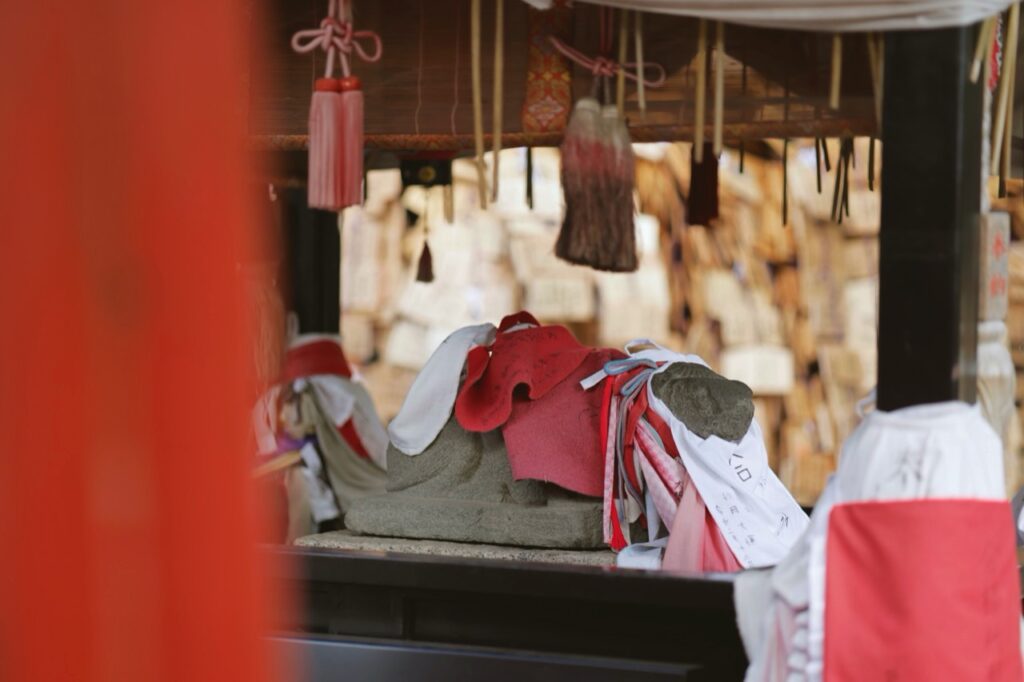
The bull of one's wish is fulfilled

You can see many lying cows in the precincts of the shrine. They are also called "Nade-gyu" (literally, "patting cows") because it is believed that patting them will bring blessings. The oldest "ougyu-sama of wish fulfillment," said to be the oldest in the shrine precincts, has a rounded body with a slightly chipped head, as people who prayed to Tenjin-sama for good luck would stroke the bull's head. Also, don't miss the only standing bull carved on the eaves of the main shrine (one of the load-bearing members of the roof).
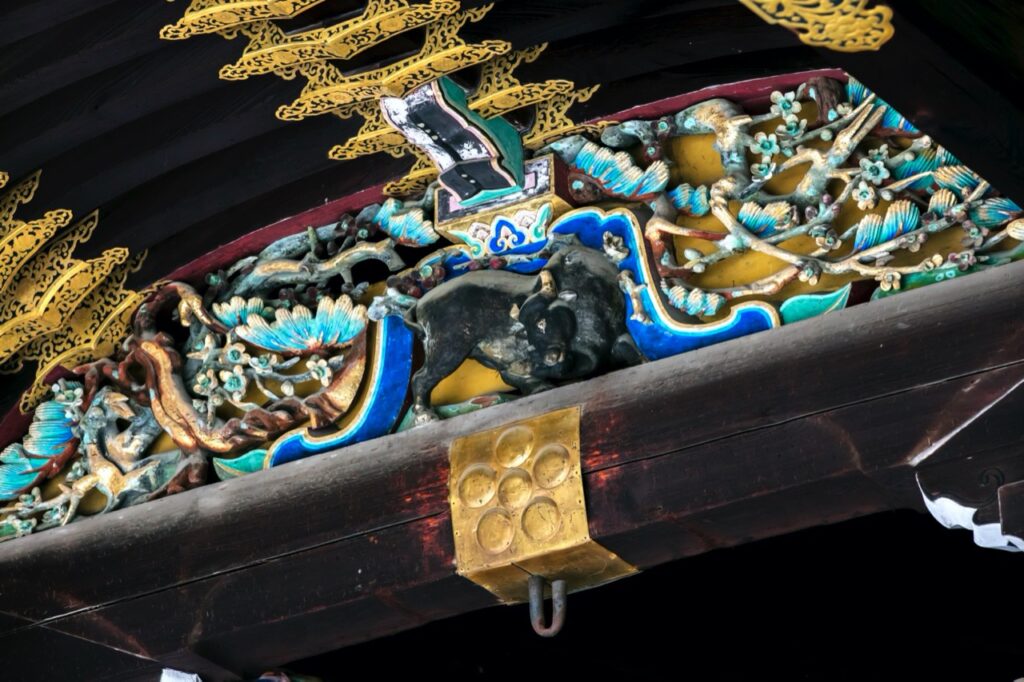
The only standing bull in the precinct

Lord Suga lived in Benmeiden (Red Plum Hall) in Heian-kyo and loved the plum blossoms so much that he composed a poem in memory of parting with them when he was transferred to Dazaifu. The legend of "flying plum blossoms," which is said to have flown from present-day Kyoto to Kyushu, also remains. Every year, from the beginning of the New Year, 1,500 ume trees of 50 varieties begin to bloom in the grounds of the temple. From the observatory, which offers a 360-degree view of the plum garden, visitors can admire the plum blossoms that Lord Suga loved so much.
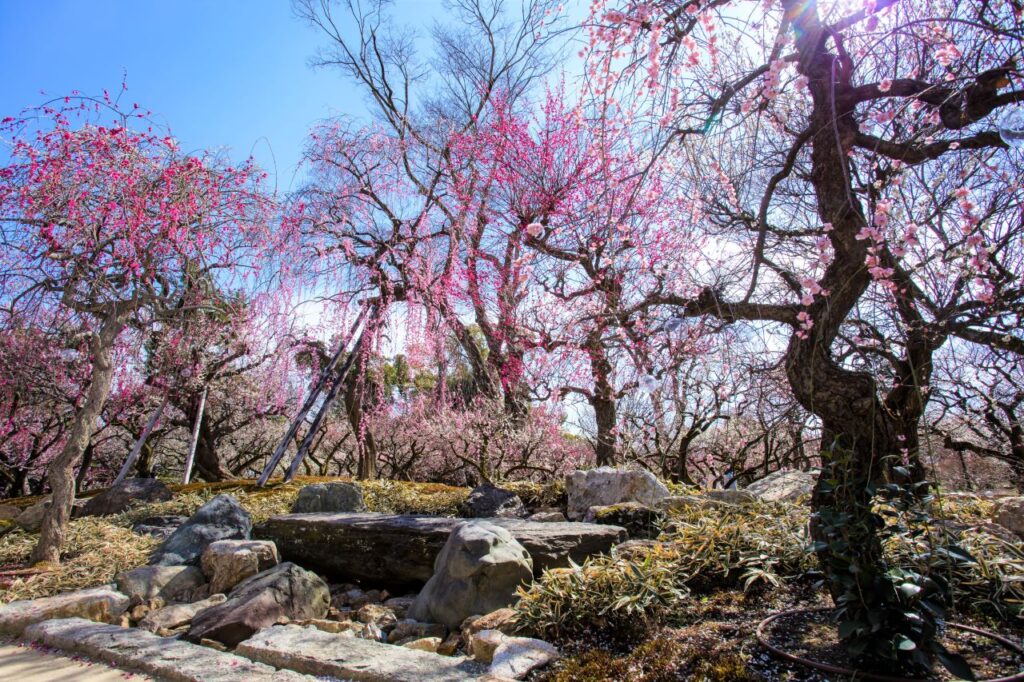
Hana-no-niwa," the plum garden at Kitano Tenmangu Shrine. Lighted up for a limited period of time, the scenery is also fantastic.

It is said that Suga loved the autumn leaves as much as the plum blossoms. The poem that Lord Suga composed is No. 24 in the Ogura Hyakunin Isshu (One Hundred Poems of Ogura), which expresses his admiration for the beautiful autumn leaves that look like brocade. The shrine gate built by Toyotomi Hideyoshi in the Momoyama period (1573-1600) has been transformed into a "maple garden" with approximately 350 maple trees, and is a popular spot to enjoy the green autumn leaves in early summer and the red leaves in autumn.
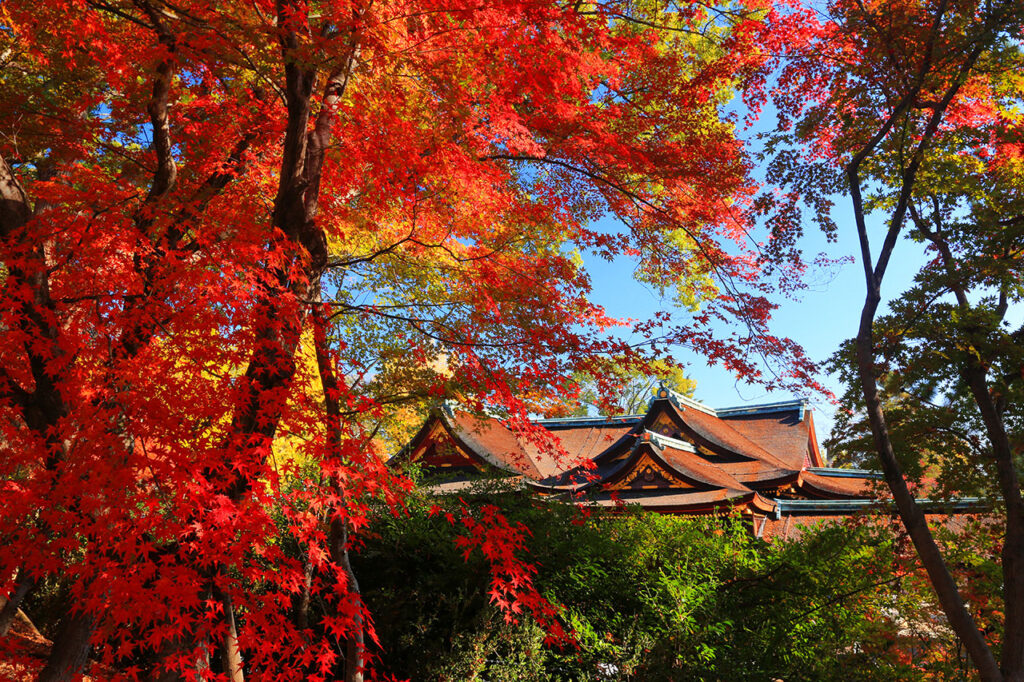

Sugawara no Michizane was a politician who achieved an exceptional career and was an official of the Imperial Court. He was a scholar with a spirit of "Japanese spirit and Chinese learning," and excelled in the fields of waka poetry and Chinese poetry.
In the Edo period (1603-1867), "Mikage" depicting Lord Suga was displayed at temples and shrines throughout Japan, where people prayed for academic success and the advancement of the martial arts. Many cultures that remain today were born at Kitano Tenmangu Shrine.
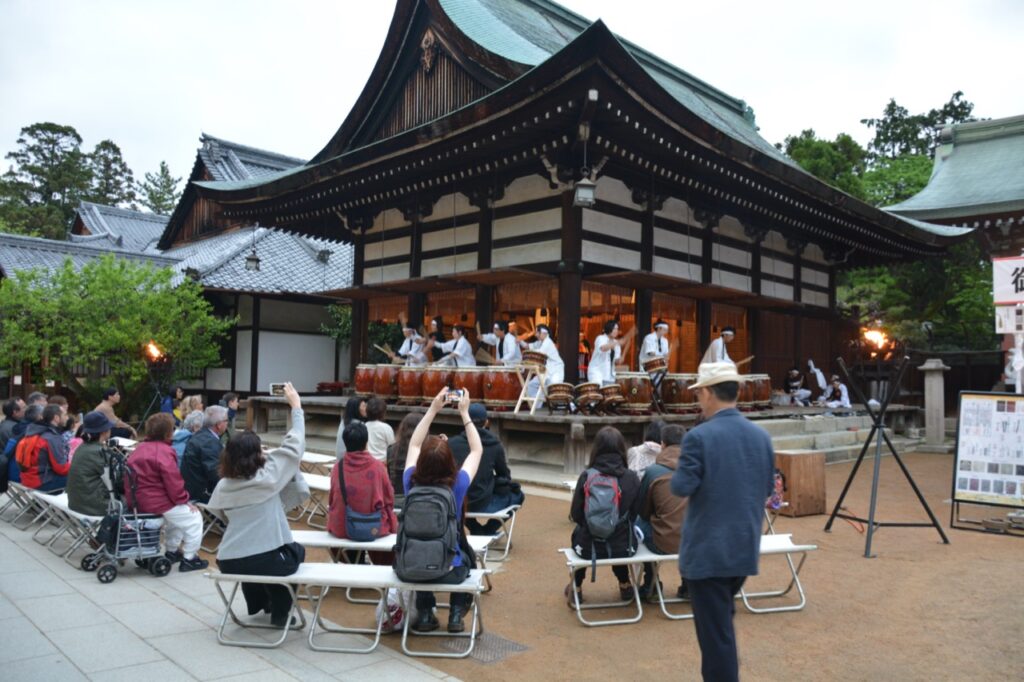
Tenjin drums dedicated at Kaguraden

In 1603, Izumo Akuni, who is regarded as the founder of Kabuki, performed the "Kabuki Dance" for the first time at Kitano Tenmangu Shrine. Gorobei Doro, known as the "founder of Kamigata rakugo," also performed here in the past. Even today, on Tenjin holidays, kagura dances and Tenjin taiko drums are dedicated at the Kaguraden.
The pedestal of the guardian dog in front of the Ichino-torii (first shrine gate) facing Imadegawa-dori was designed by Takeuchi Seiho, who was considered one of the greatest painters of the Meiji era. The "Red and White Plum Blossoms" that served as the base for the pedestal will be on display at a special exhibition that will run until March 26 (Sun.), 2023, so it is recommended to compare the two.
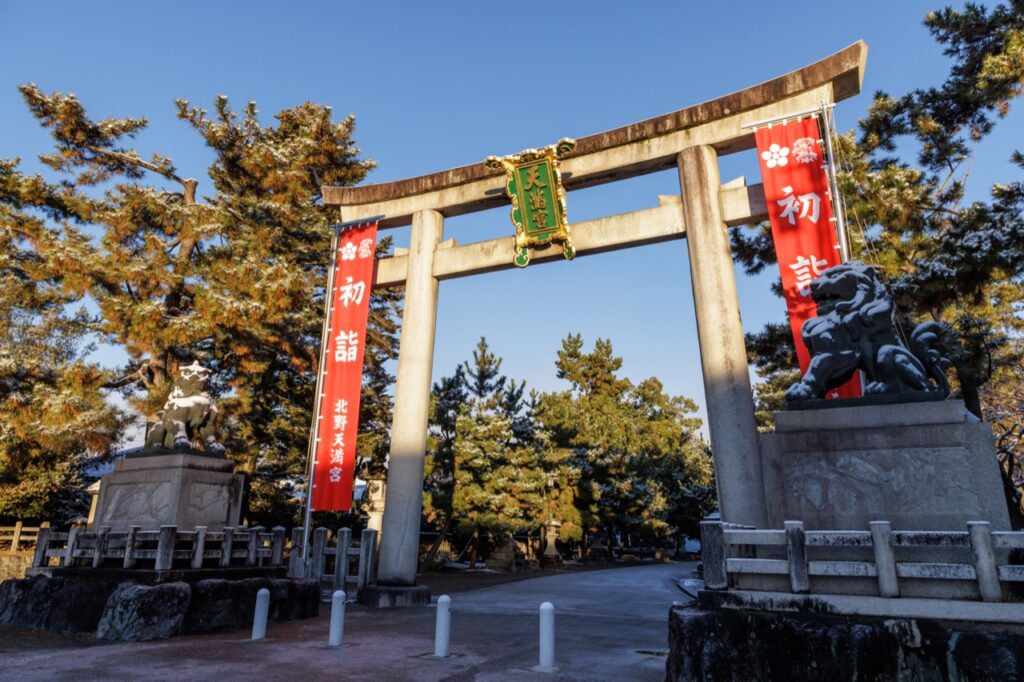
The pedestal of the guardian dog in front of the first torii gate was designed by Takeuchi Seiho

Crossing the approach to the shrine and passing through the tower gate, the Sankomon Gate, the symbolic architecture of [Kitano Tenmangu Shrine], the middle gate, appears on the left. Sanko means sun, moon, and stars, and carvings can be seen between the beams, but only the stars are absent. It is said that the star was not carved because the emperor once looked out over Kitano from Daigoku-den Hall and saw the North Star shining just above this gate.
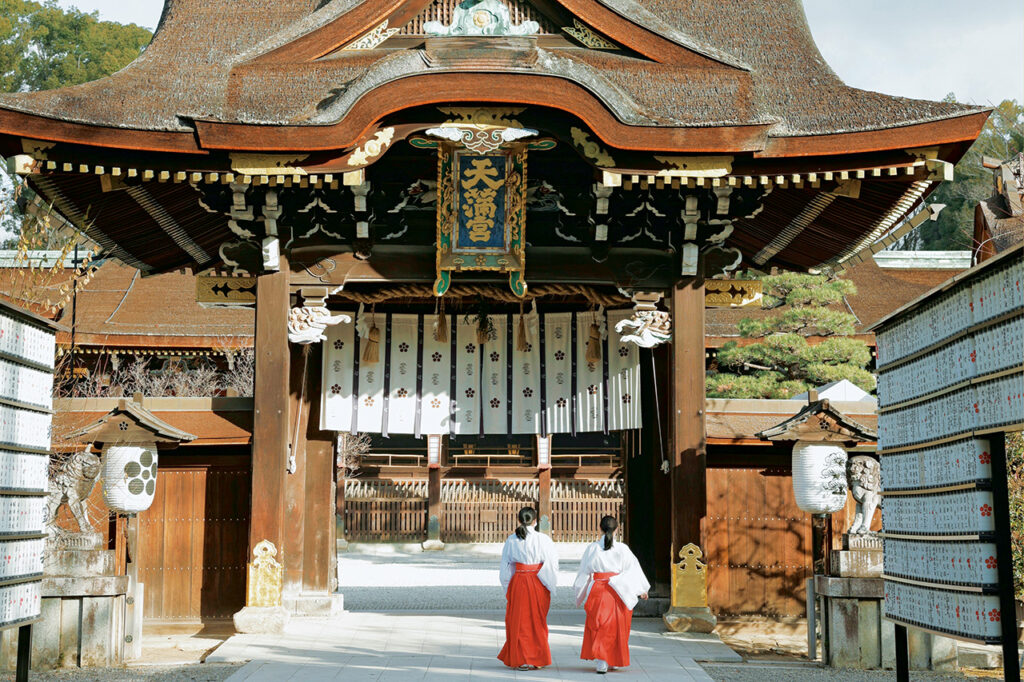
Sankomon Gate (Important Cultural Property)

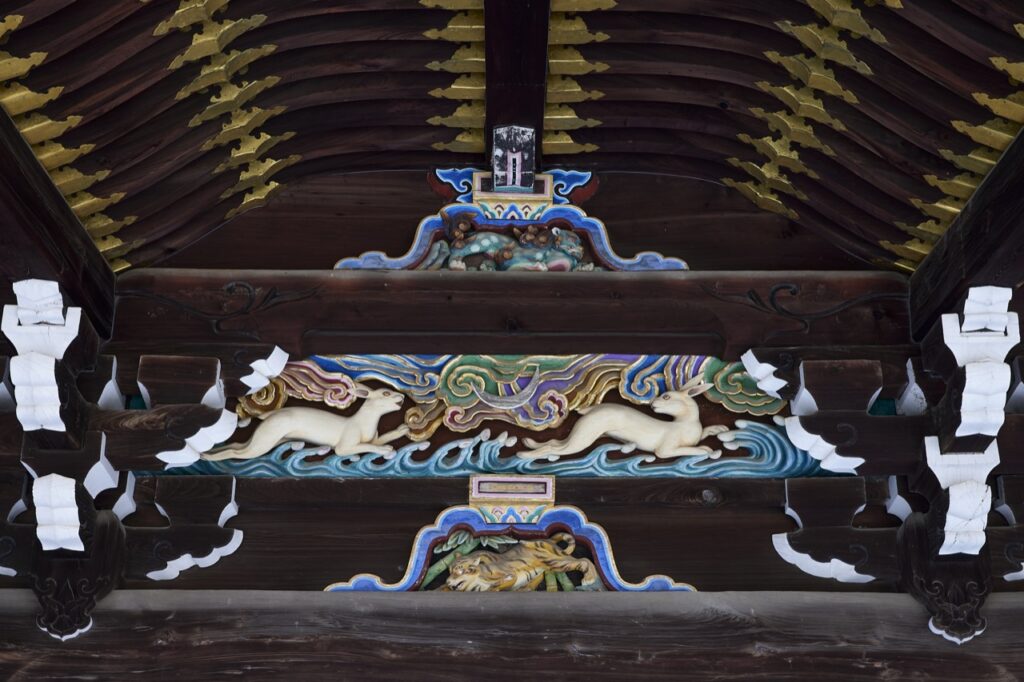
Rabbit and crescent moon carved between the beams of the Sankomon Gate

Entering through the Sankomon Gate and proceeding along the white sand path, one encounters the overwhelming main shrine building with a cypress bark roof that covers a total area of about 500 tsubo. It is said that Kitano Tenmangu Shrine is the only shrine building that has preserved the original scale of the Momoyama Period. The main hall and worship hall are connected by a stone room, and the structure with a side hall and a raku room is called "Hachimono-zukuri" or "Gongen-zukuri," and is designated as a national treasure as a valuable historical structure.

Main Shrine (National Treasure)

In fact, the present main shrine was built in 1607 by Hideyori, the third son of Toyotomi Hideyoshi. The golden ornaments and vivid carvings show the character of Hideyoshi, who is said to have loved luxury. Look for the three pumpkins that Lord Hideyoshi had carved in hopes of prolonging his military fortune.
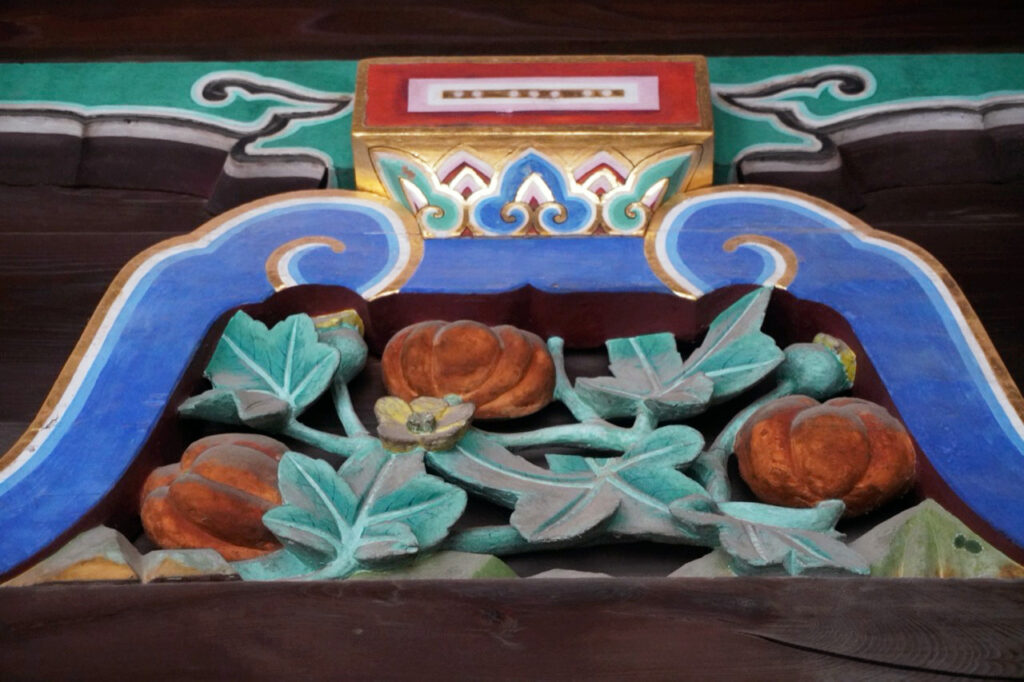
Three pumpkins carved by Lord Hideyoshi for his long life and prosperity.

In 1587, Lord Hideyoshi held the famous Kitano Grand Tea Ceremony. [The event was of an unprecedented scale, with more than 1,000 tea rooms set up around the area centering on the Kitano Tenmangu Shrine. Although we cannot visit the "Golden Tea Room," Hideyoshi's pride and joy, the "Taikoh Well" where Hideyoshi is said to have drawn water and the "Tea Room Shoukouken" used by Hosokawa Sansai still remain, and the "Offering Tea Festival" is held every December 1 in honor of the legend.
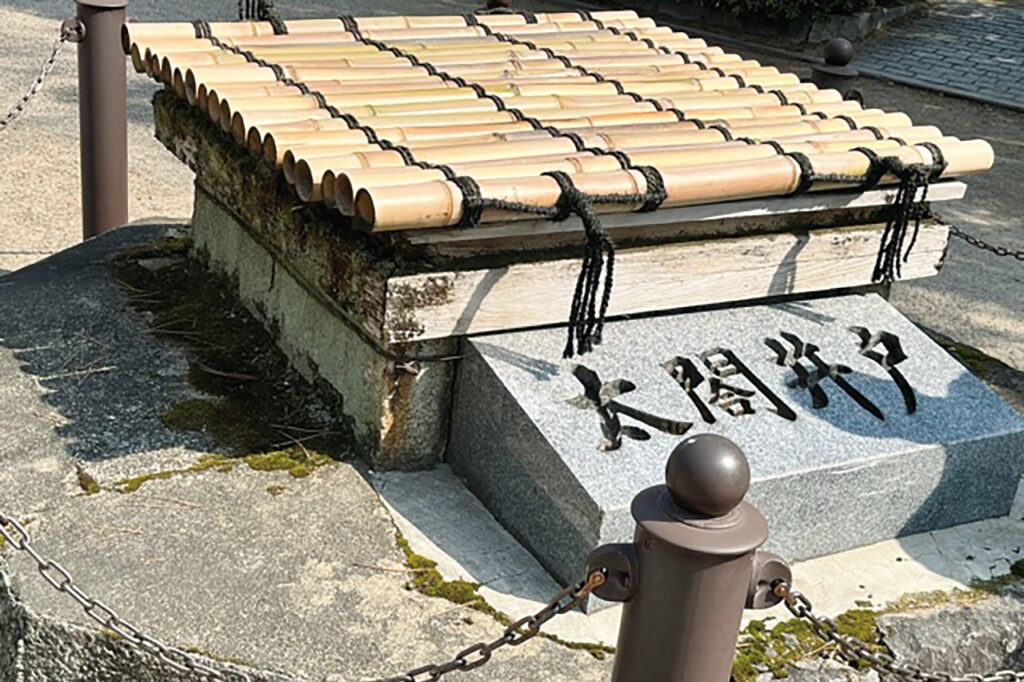
The Taikoh Well, where Lord Hideyoshi is said to have drawn water at the Kitano Grand Tea Ceremony.

Imagine the lively tea ceremonies of more than 400 years ago while tasting "Chogoro Mochi," a gate-front confectionery that was a favorite of Hideyoshi.
Tomojisha stands on the left side of the main approach from the Ichino-torii (first shrine gate) to the tower gate. Its torii gate is one of the three most unusual torii gates in Kyoto, and the base of the pillar is shaped like a lotus flower. Since the shrine is dedicated to the mother of Lord Suga, mothers who wish for their children's growth and academic success are encouraged to visit the shrine.
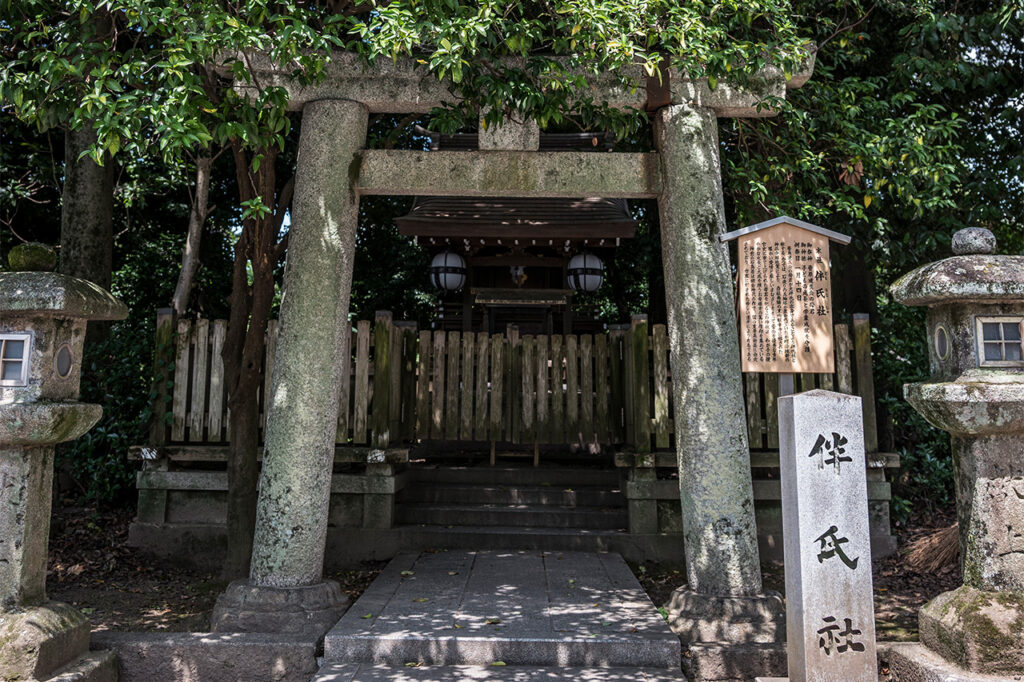
associated shrine (i.e. auxiliary shrine, subordinate shrine, etc.)

The Jishu Shrine is reached by walking straight down the main approach to the shrine. [Jishu Shrine is said to have existed before the construction of Kitano Tenmangu Shrine, and is said to be the oldest and largest shrine in the precincts of the shrine. In the past, the four directions (northeast, northwest, southeast, and southwest) were considered very important for the protection of Kyoto. Kitano is to the northwest, where the Jishu Shrine, dedicated to "Tenjin Jigi," the gods of heaven and earth, was located. The fact that the main shrine is not along the approach is said to have been built so as not to block the Jishu Shrine.
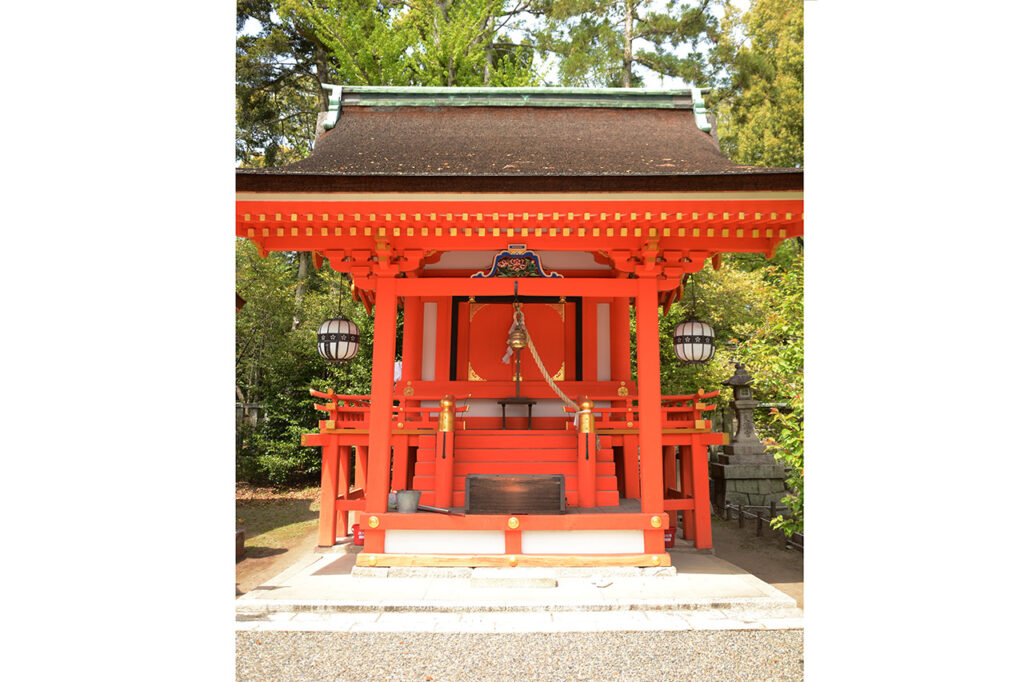
Jishu Shrine, the oldest regent shrine in the precincts of the temple.

[If you want to know more about the charms of Kitano-Tenmangu Shrine, the "Treasure House" is a must-see spot. The "Kitano Tenjin Engi," an 80-meter-long picture scroll that tells the story of Lord Suga's life, is a dynamic work of art that will leave you in awe.
Beautiful plum blossoms and autumn leaves, a hall of worship and a regent shrine that tells a story. Let's visit "Tenjin-san," which is full of attractions, and experience the architecture and nature that have carved a rich history.
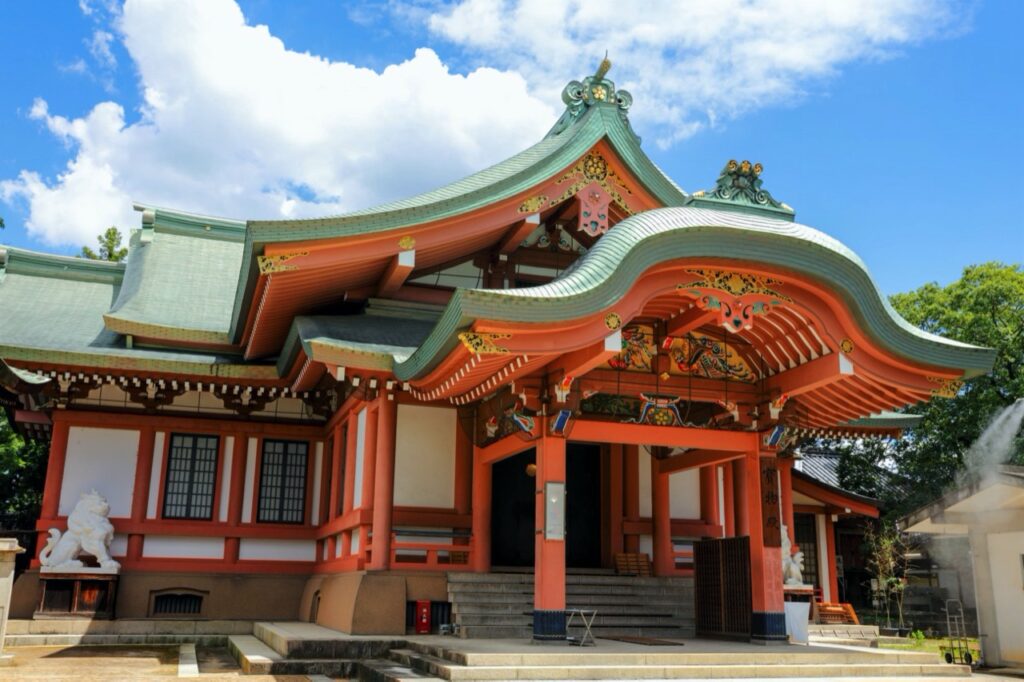
(shrine) sanctuary

Over 600 interviews per year! An order site carefully selected by the editors who knows Kyoto and Shiga.
nowOfficial LINE friend registration500 yen OFF coupon is being issued!
Distributed every Friday morning at 8:00 am! From new restaurant information to event information that we want to share with you, We deliver articles about Kyoto that are useful to know. About 20,000 people have registered.Click here to add a friend!
 News
News Feature article
Feature article Featured event
Featured event